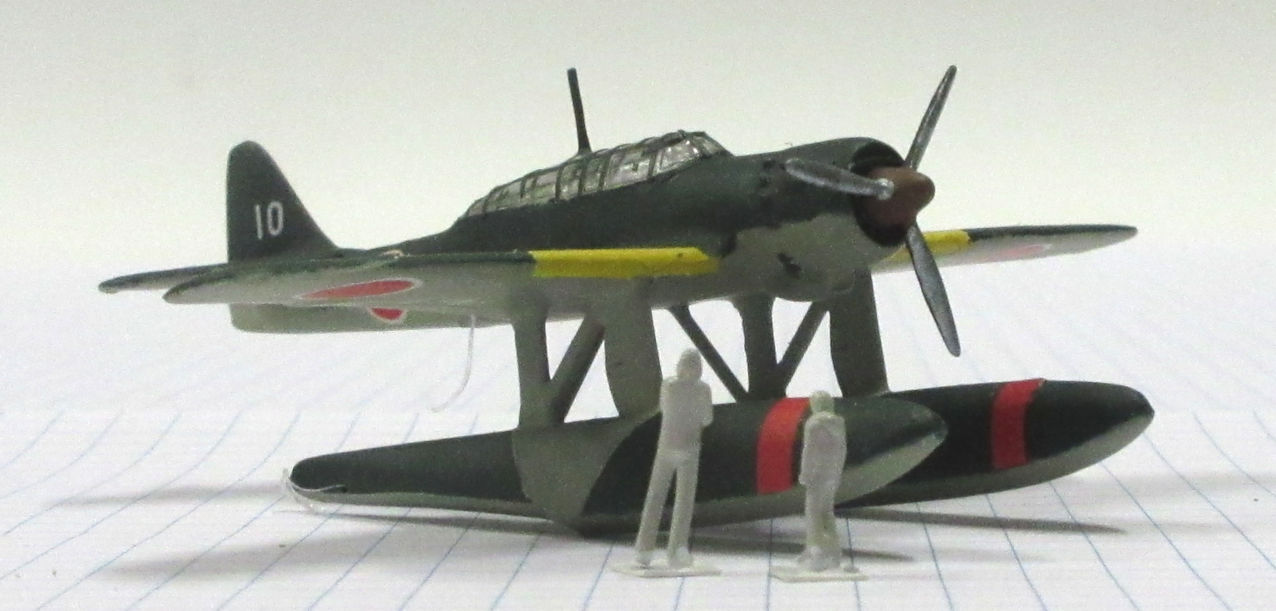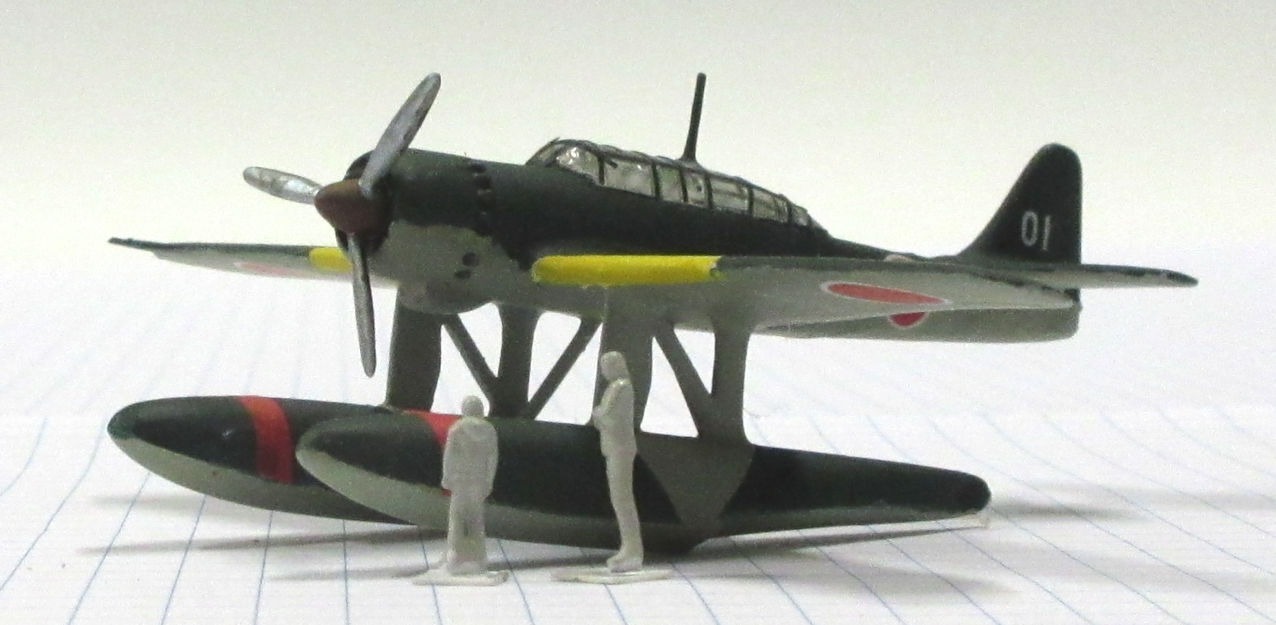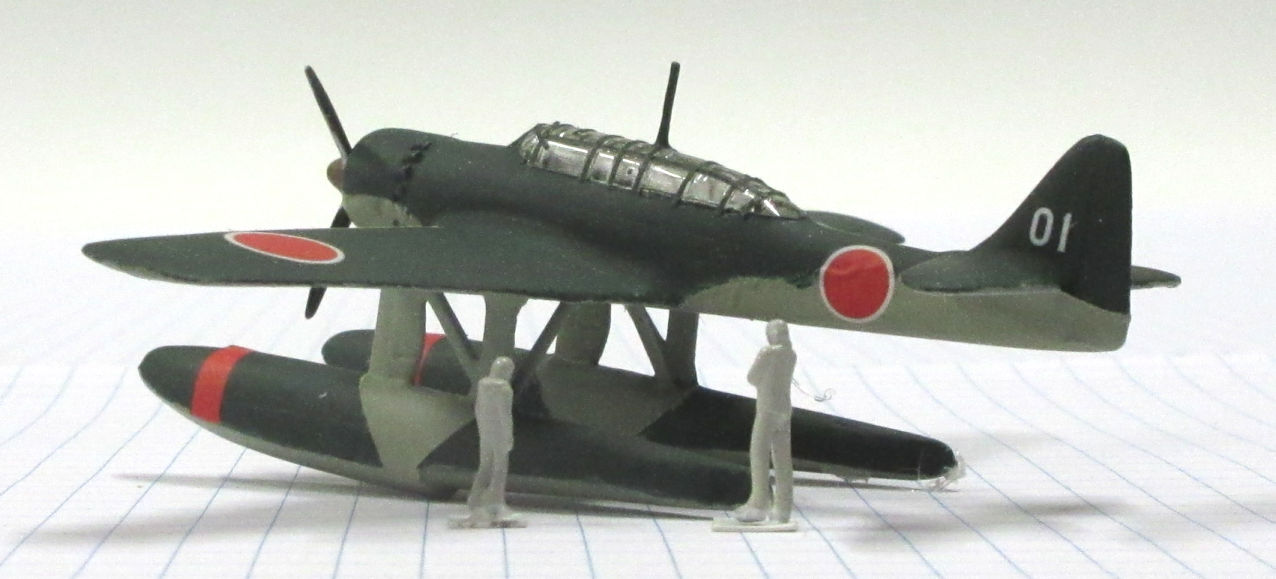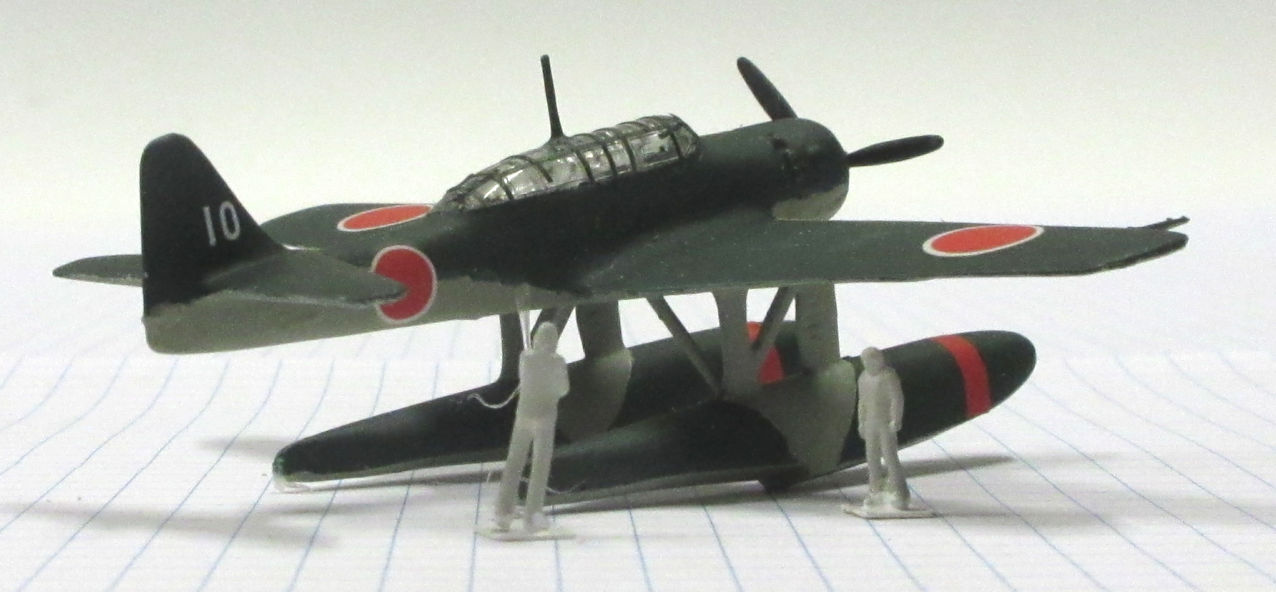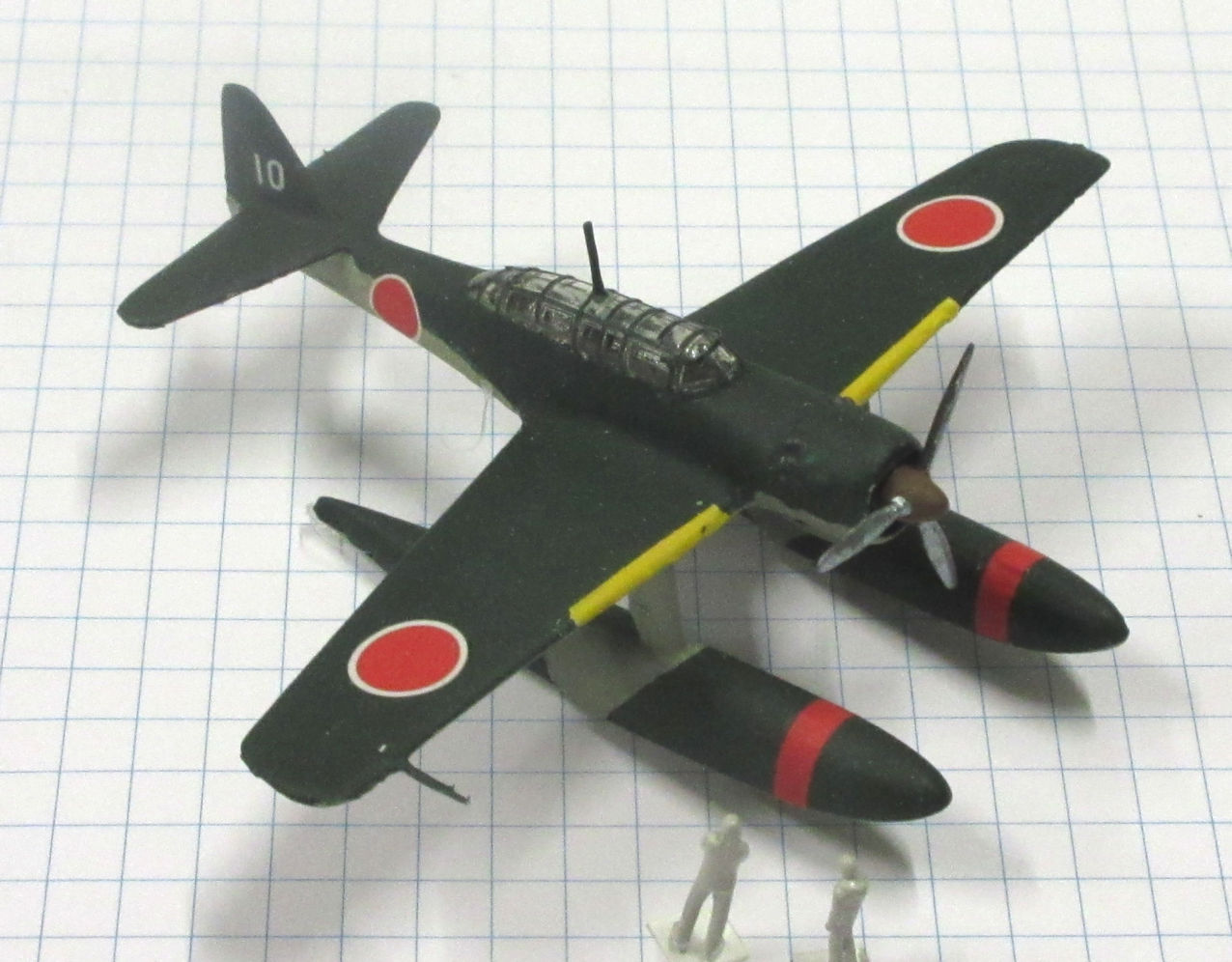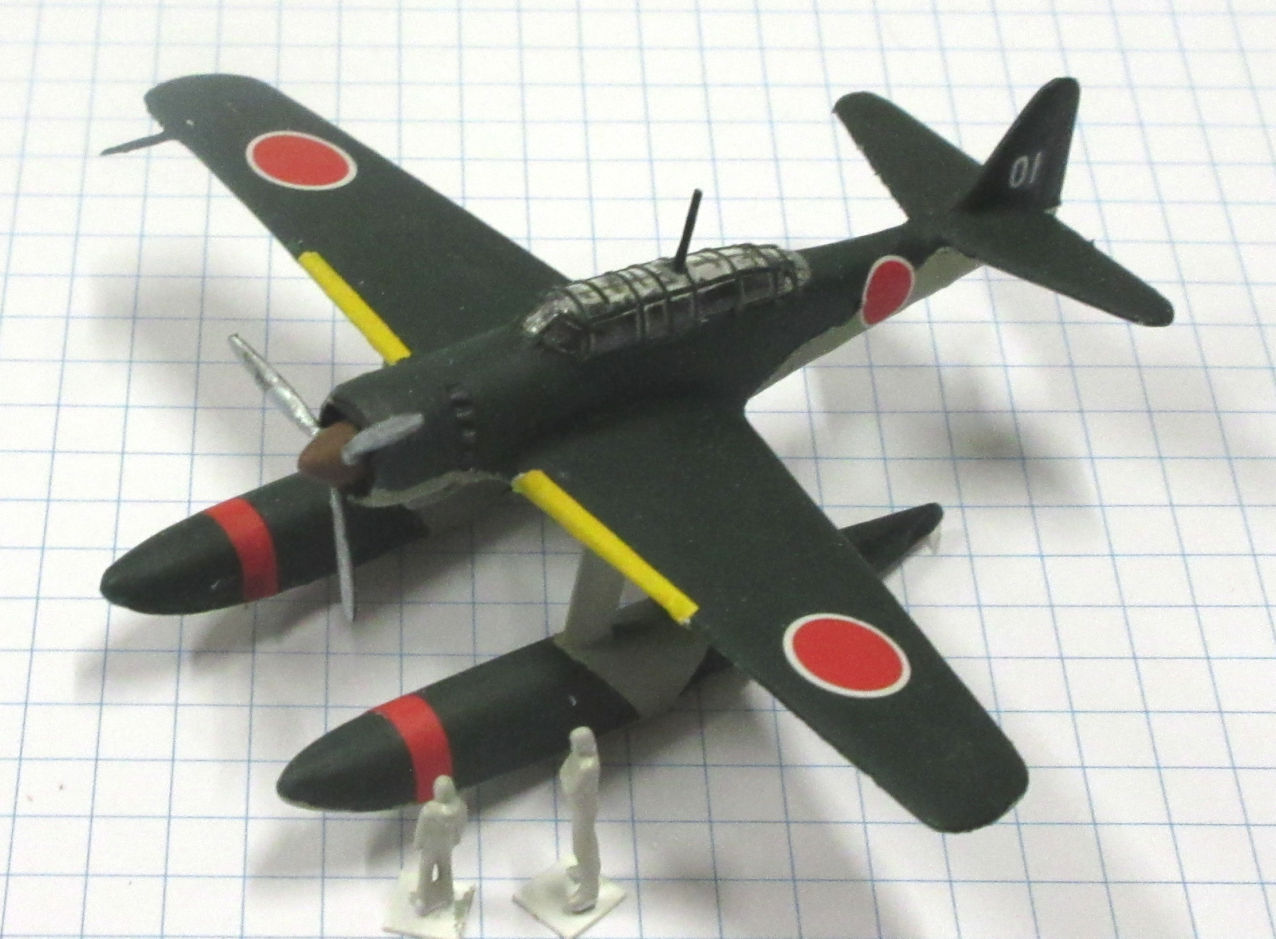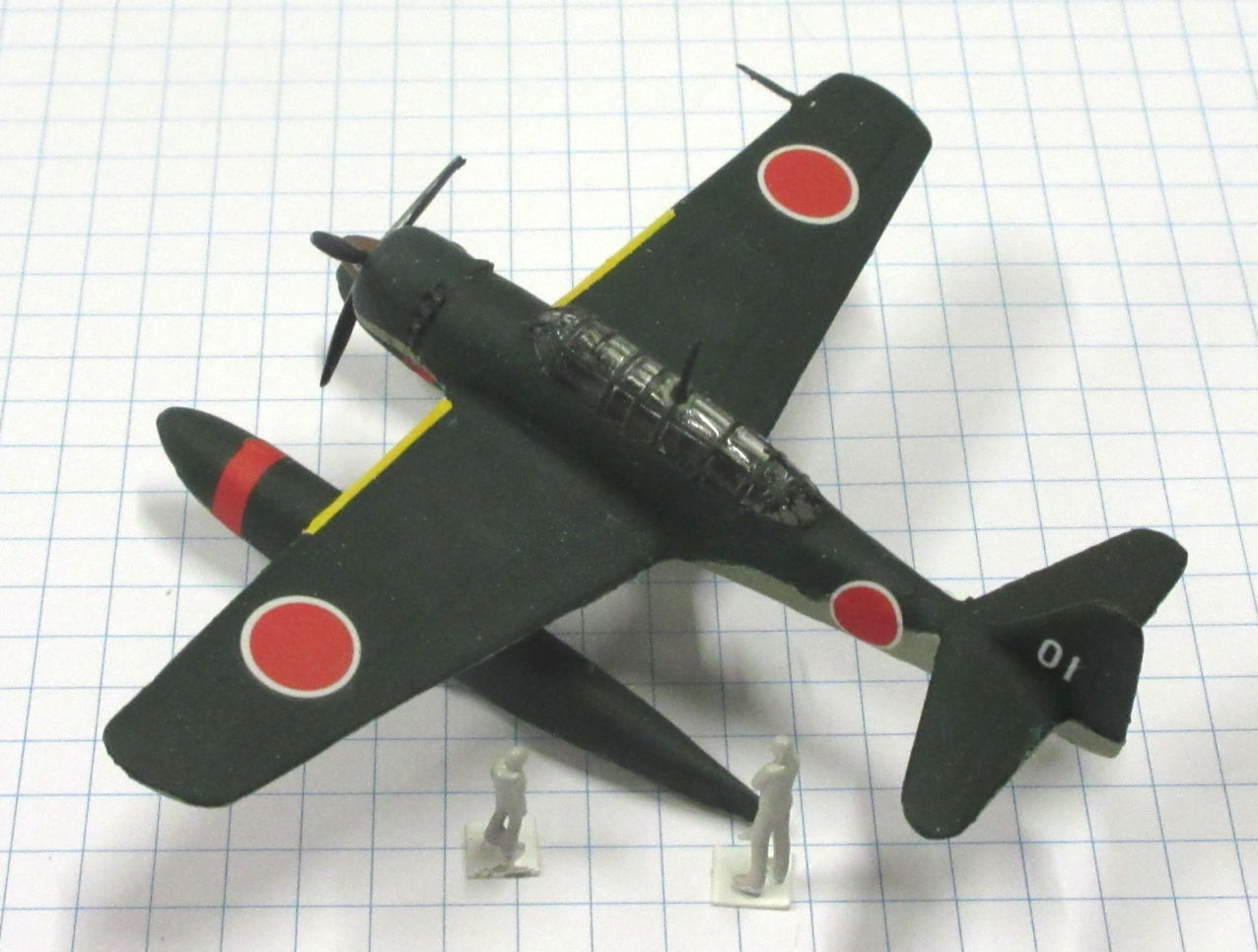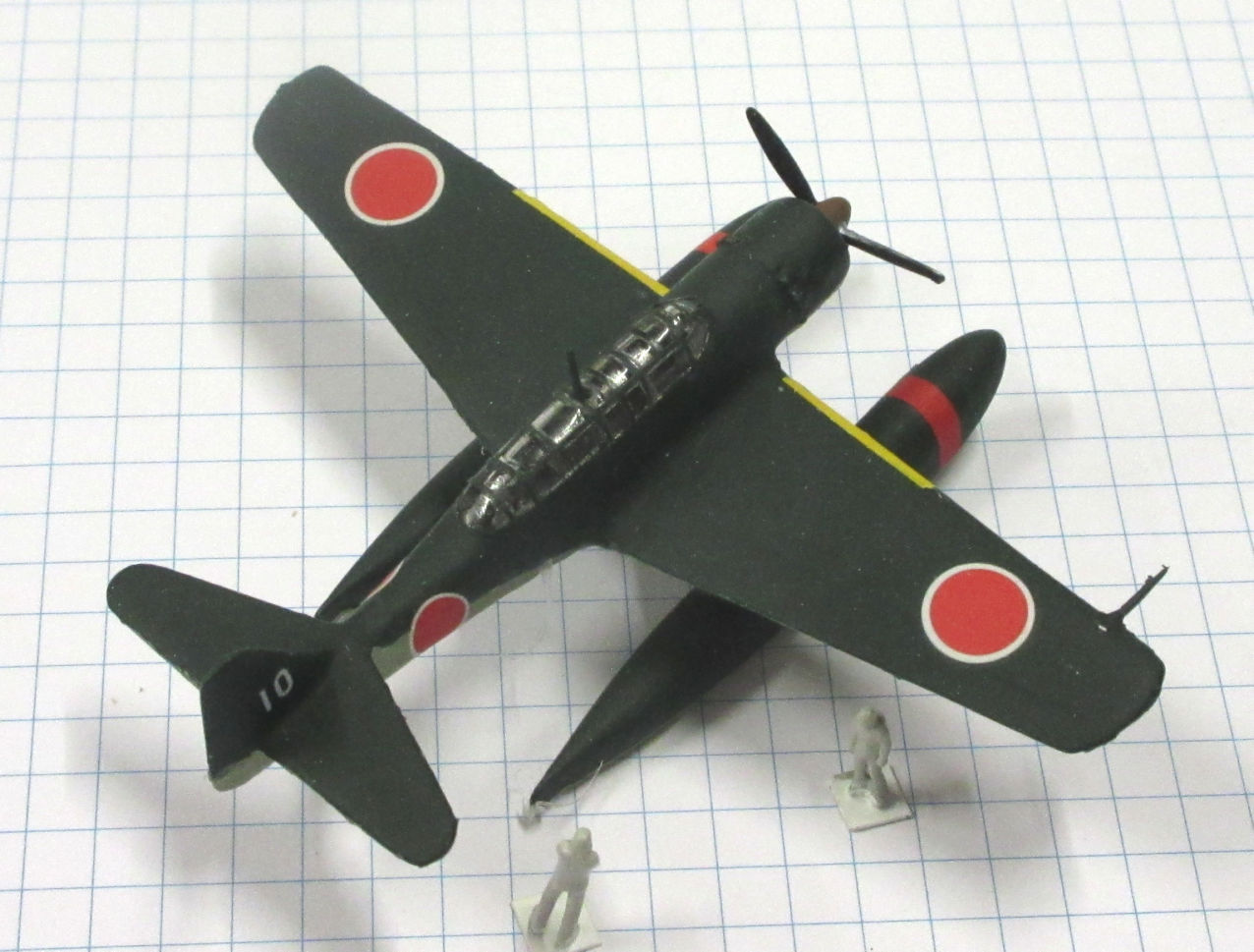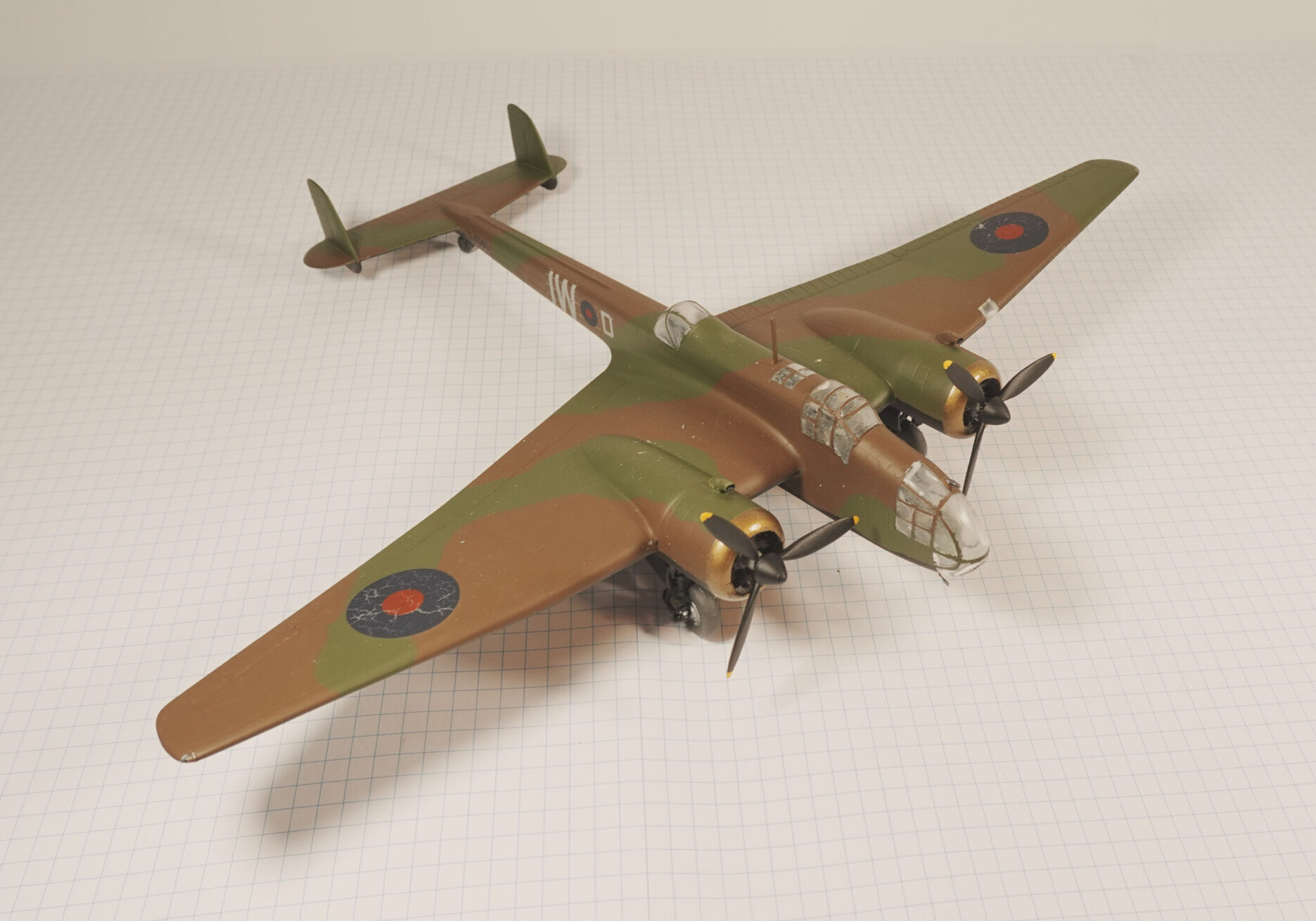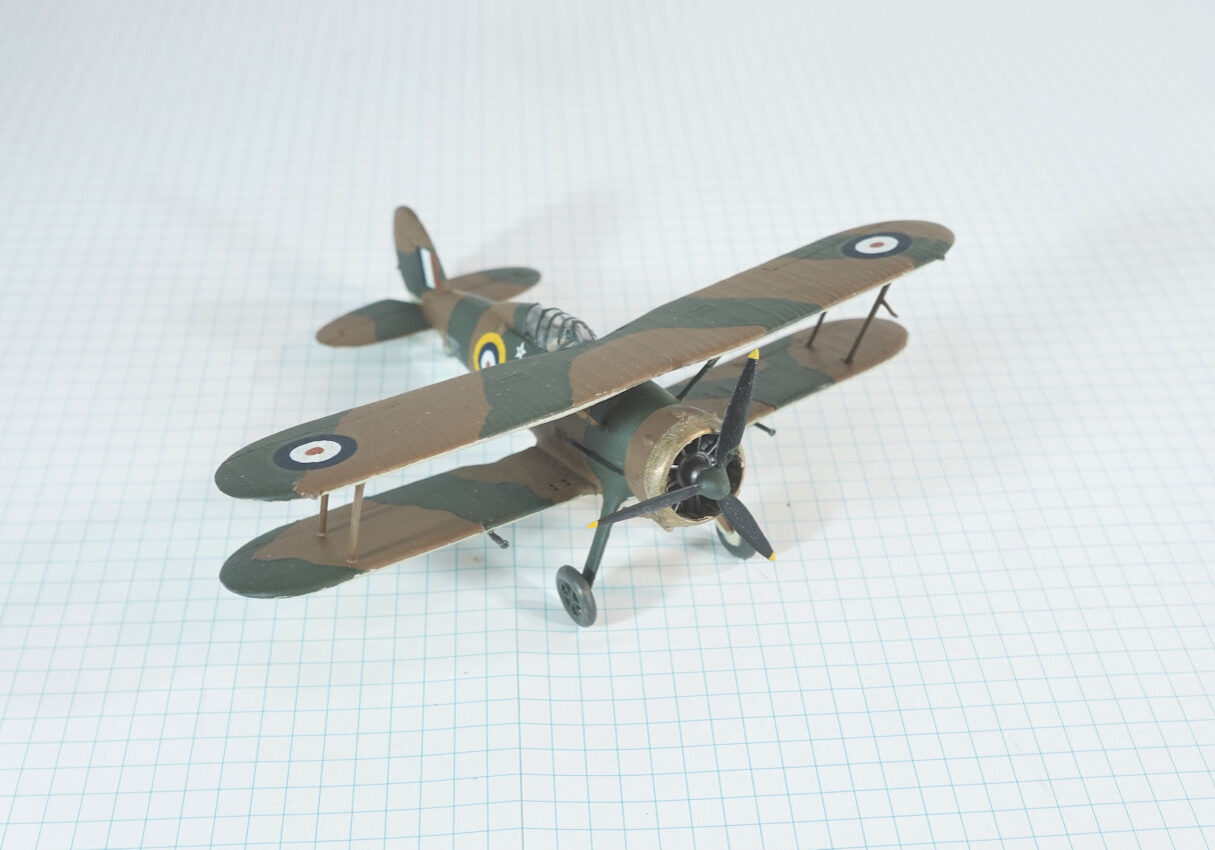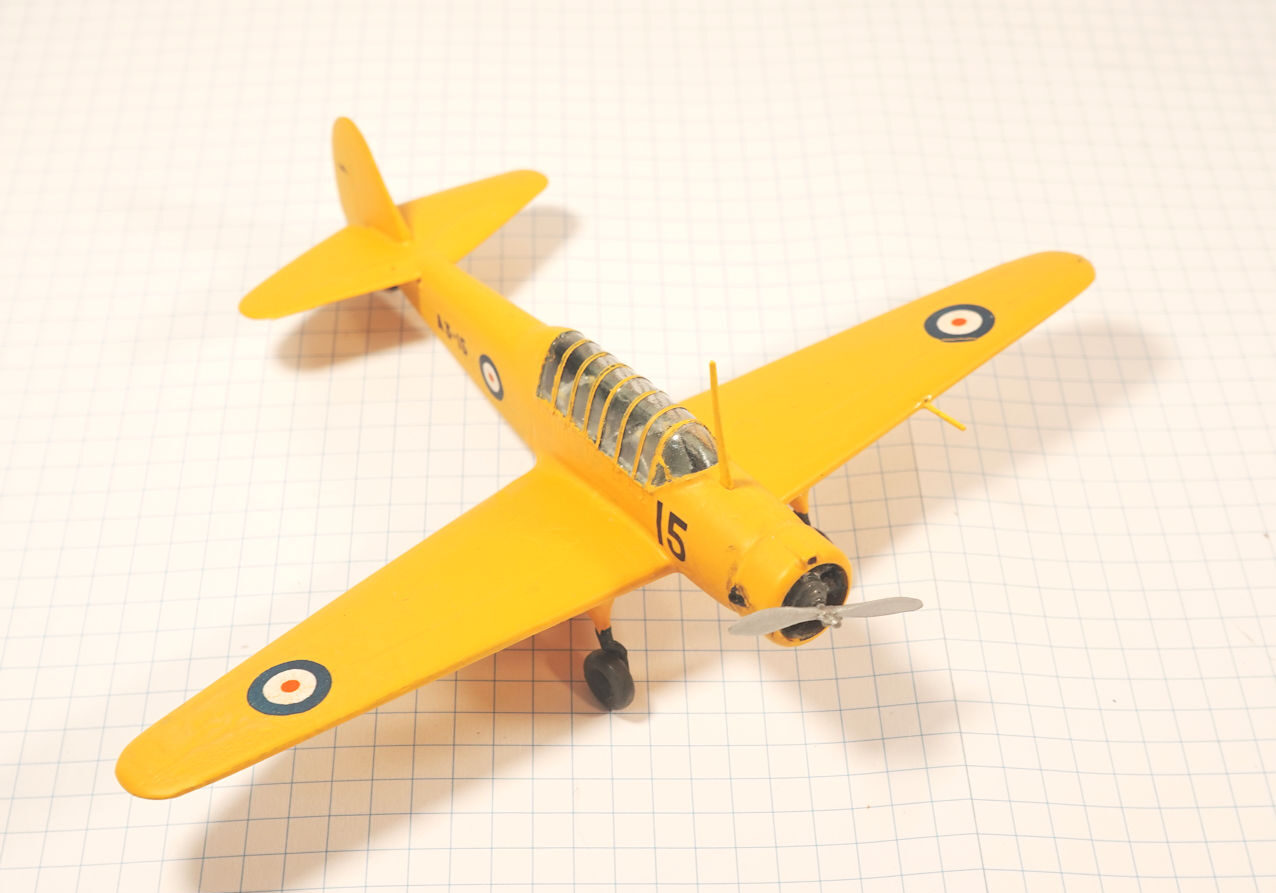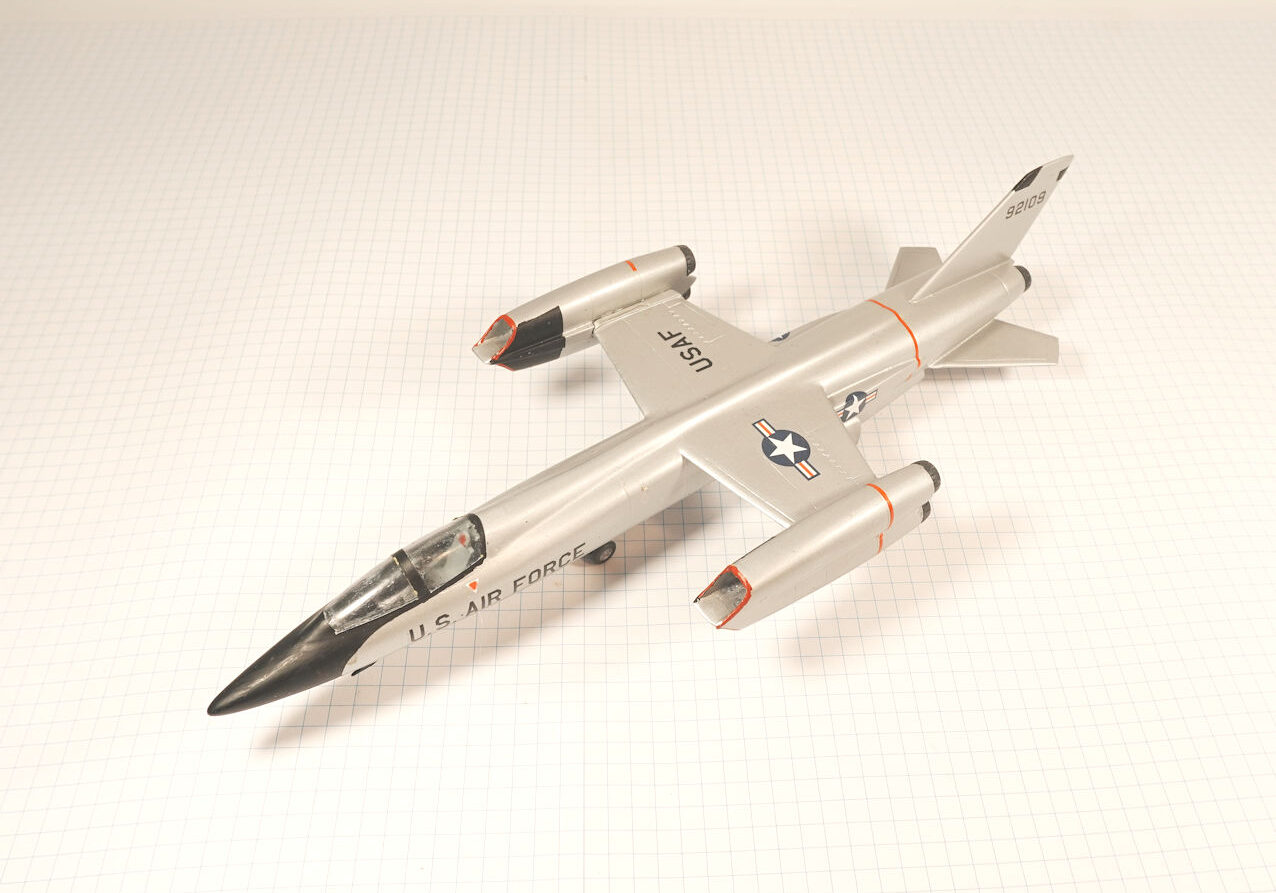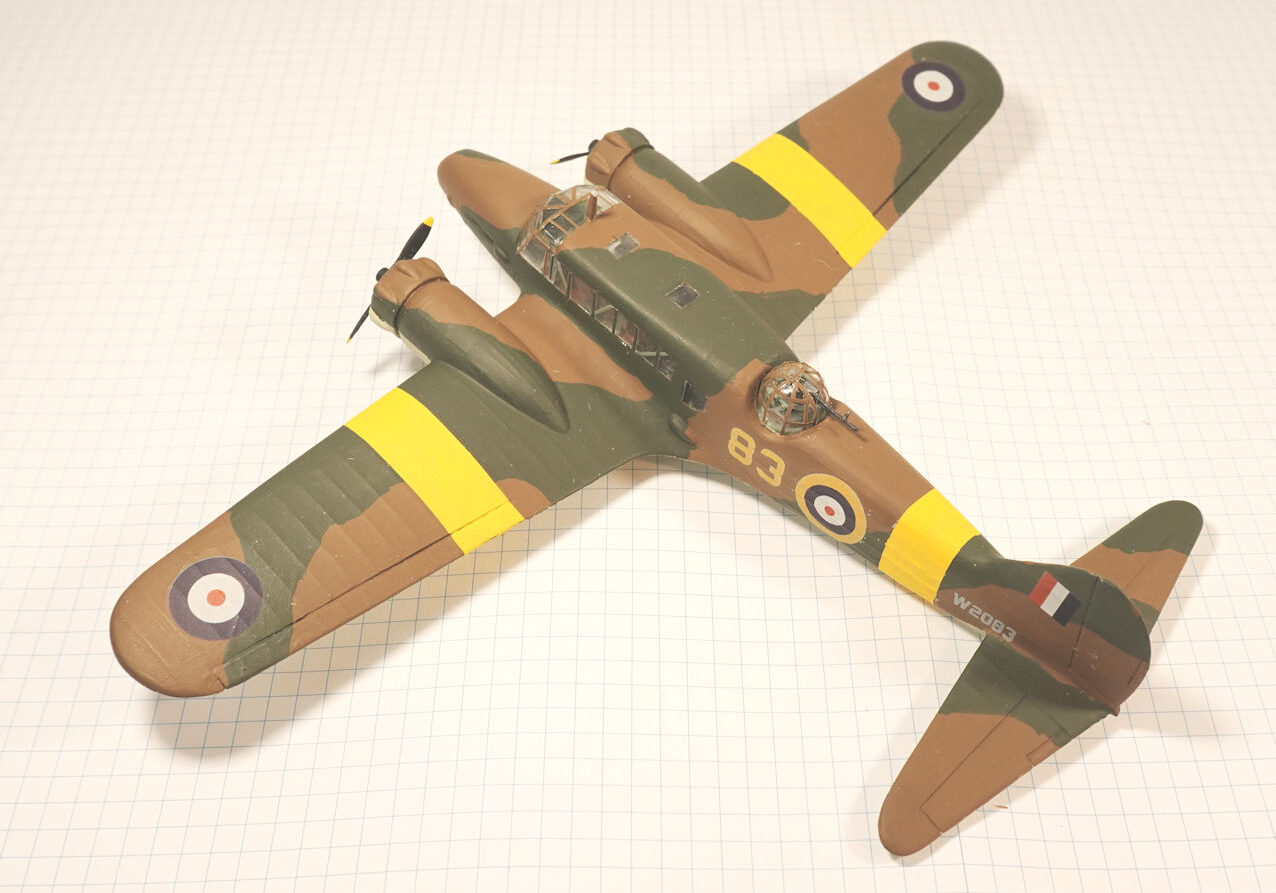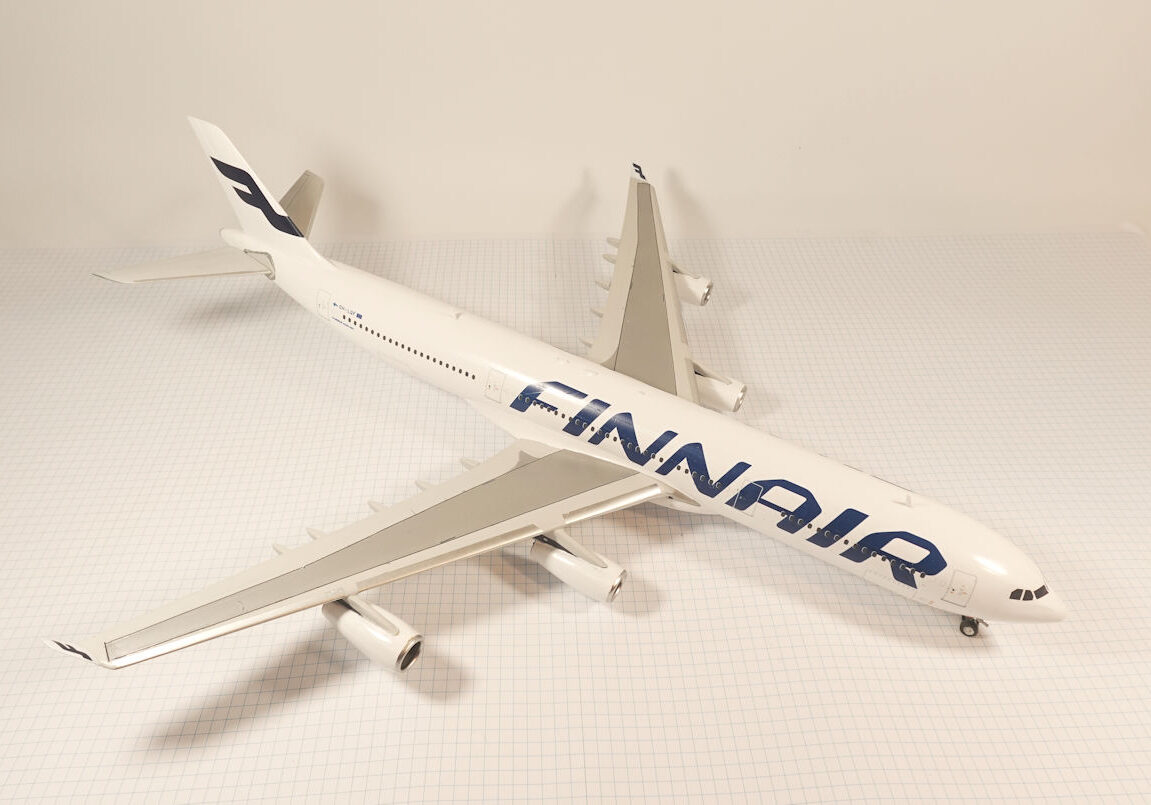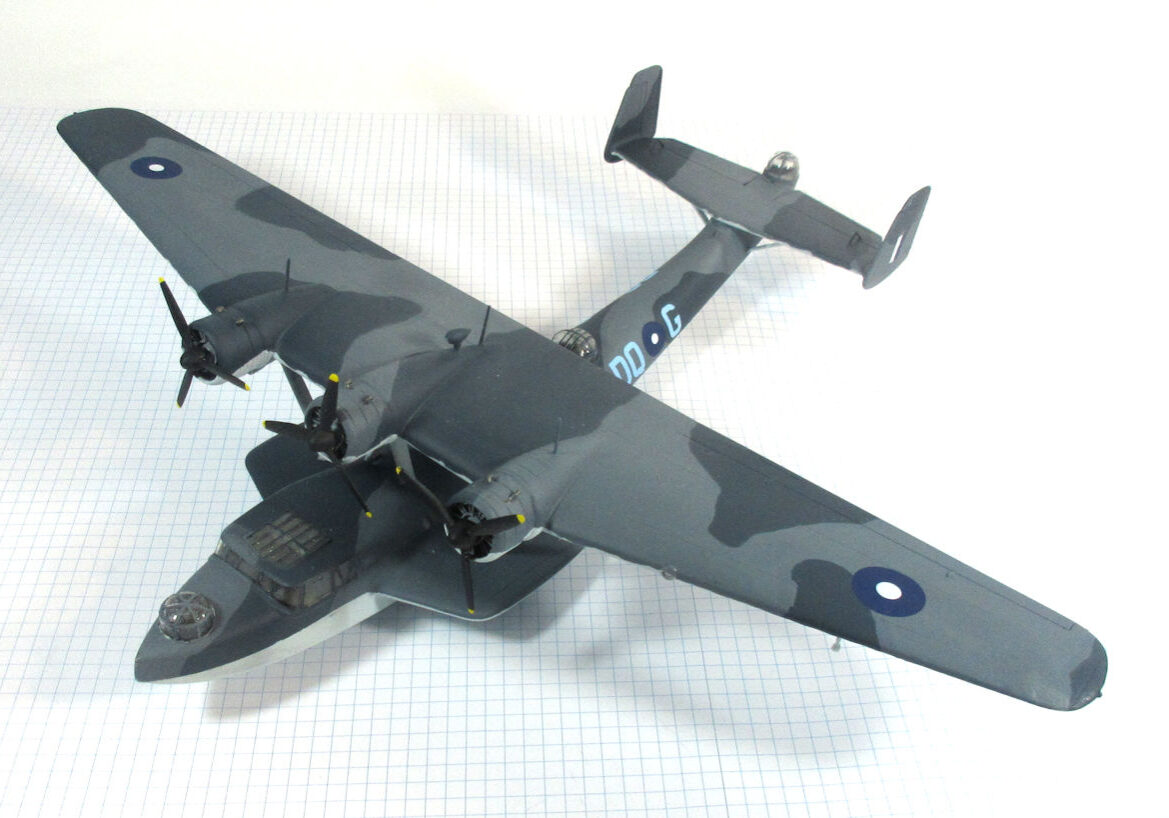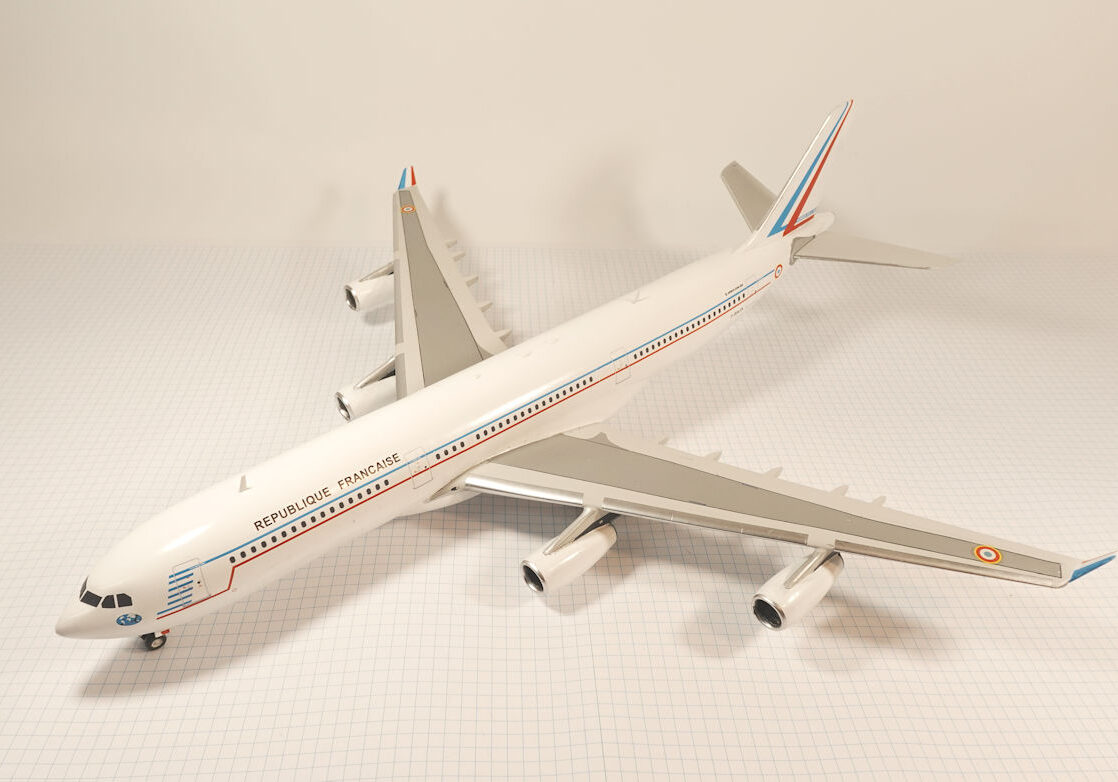History
The Aichi E16A was a two seat reconnaissance floatplane designed to fly from the major ships of the Imperial Japanese Navy during World War II. By the time it entered service it was outclasses and suffered heavy losses.
The Aichi E16A was designed to fly from the cruisers and battleships of the Imperial Japanese Navy.
Specifications for a new floatplane were issued in 1939 but delays meant design did not begin until October 1940 and the prototype was completed in May 1942.
It was accepted by the Navy in August 1943 and 256 were manufactured.
It began entering service in 1944 but by this time the allies had gained air superiority over most of the Pacific and most of the ships it had been designed to fly from had been lost.
The E16A was used extensively during the American invasion of the Philippines and suffered heavy losses and many were used in kamikaze attacks during the invasion of Okinawa.
Anigrand 1/144 kit completed by Leigh Edmonds in January 2019.
